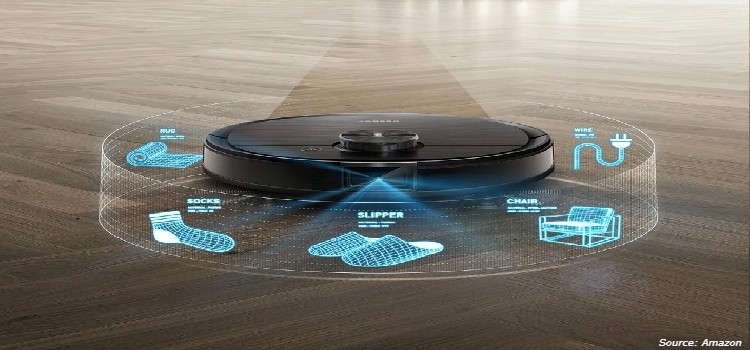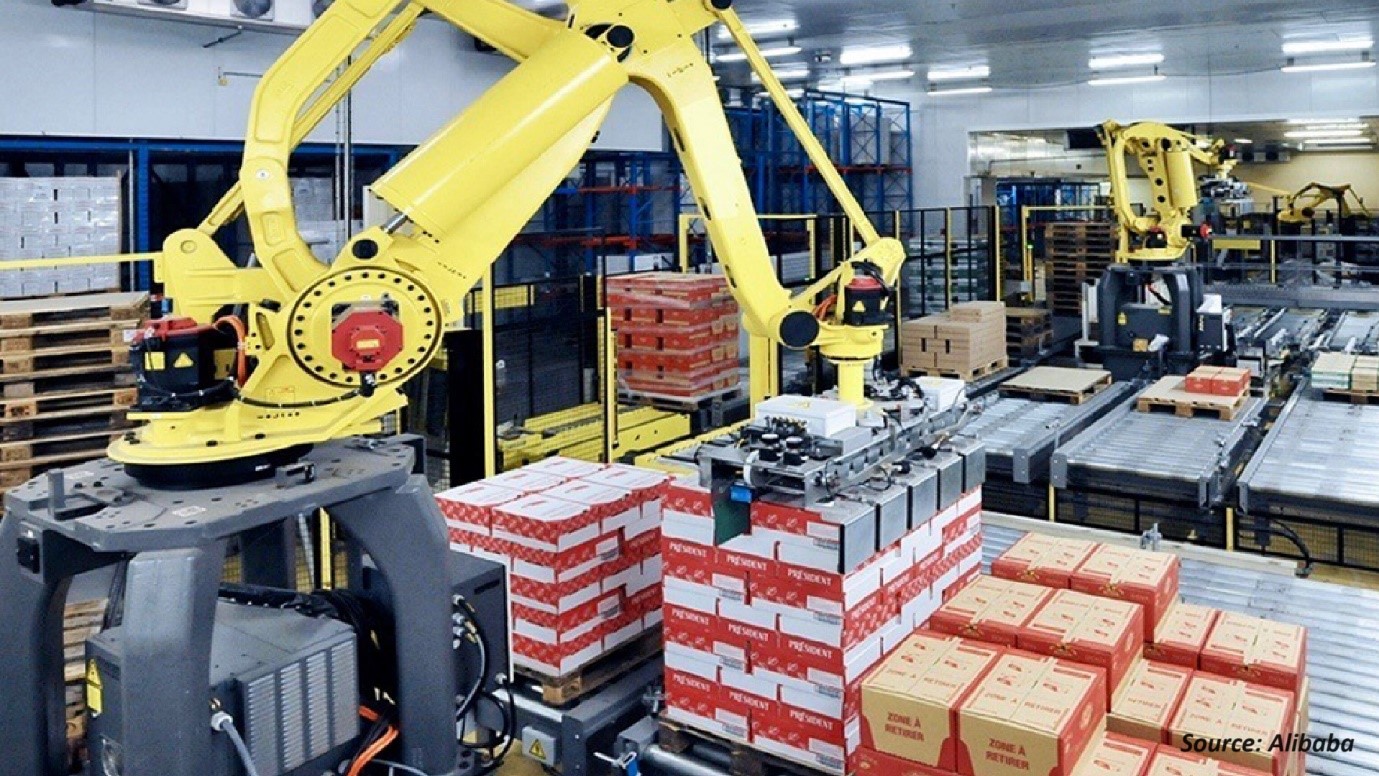
Predictive Maintenance Market by Component (Solution and Service), by Deployment (Cloud and On-premises), by Technique (Vibration Monitoring, Electrical Testing, Oil Analysis, Ultrasonic Leak Detectors, Shock Pulse, Infrared, and Others), by End User (Manufacturing, Energy & Utilities, Aerospace & Defense, Transportation & Logistics, Government, Healthcare, and Others) – Global Opportunity Analysis and Industry Forecast, 2024–2030
Industry: ICT & Media | Publish Date: 29-Jan-2024 | No of Pages: 460 | No. of Tables: 313 | No. of Figures: 258 | Format: PDF | Report Code : N/A
Market Definition
The global Predictive Maintenance Market size was valued at USD 5.93 billion in 2023, and is predicted to reach USD 32.30 billion by 2030, at a CAGR of 27.4% from 2024 to 2030. The predictive maintenance industry is revolutionizing maintenance strategies for industrial equipment through the integration of cutting-edge technologies. It relies on a combination of IoT sensors, AI-driven analytics, and data management systems to continuously monitor the conditions of equipment.
By analyzing factors, such as temperature, vibration, and performance metrics, it can predict the need and time for maintenance or servicing, effectively minimizing unplanned downtime. Predictive maintenance rely on machine learning algorithms that process large volumes of data to identify patterns and anomalies and improve accuracy over time. This approach not only reduces operational costs but also extends the shelf life of equipment, making them invaluable in industries reliant on complex machinery.
However, challenges like initial investment and model accuracy could hamper the market growth. However, advancements in IoT, AI, and analytics, along with the integration of edge computing and 5G technology, are expected to further propel the growth and innovation of this dynamic industry.
According to a report by Deloitte in 2022, predictive maintenance (PdM) can reduce facility downtime by 5–15% and increase labor productivity by 5–20%. PdM also has a positive impact on operational sustainability by minimizing energy usage and wastage.
Rapid Adoption of Internet of Things (IoT) Influence the Predictive Maintenance Industry
The Internet of Things (IoT) revolutionized the industry by enabling real-time data collection from machinery through sensors. Advanced analytics and AI algorithms process this data, predicting maintenance needs based on the condition of the equipment rather than fixed schedules.
This dynamic approach reduces unplanned downtime and associated costs. Additionally, IoT allows remote equipment monitoring and management, enhancing safety and extending asset lifespan. Embracing IoT-driven predictive maintenance gives companies a competitive edge, thereby revolutionizing operational efficiency and cost savings in industries worldwide.
With the launch of a new AI-based intelligent predictive maintenance IoT solution by Advantech Co., Ltd., and Actility S.A., for the rotating machinery that provides real-time and future health indices for multiple machines, which aid in smart resource allocation. The solution streamlines data processes and operates on LoRaWAN technology, a low-power, wide area networking protocol built on the LoRa radio modulation technique, for efficient communication between sensors.
Growing Demand for Affordable Maintenance Solutions for Cost-Cutting Measures
Operational optimization spurs the demand for cost-effective maintenance solutions within the predictive maintenance industry. This need for operational optimization arises from the universal goal of businesses to increase efficiency and reduce costs.
Predictive maintenance leverages advanced technologies, such as IoT sensors and AI algorithms, to gather real-time data and forecast maintenance needs accurately. This precision in timing ensures that resources, including labor, materials, and equipment, are allocated judiciously, leading to substantial cost savings.
Moreover, predictive maintenance minimizes unplanned downtime, a significant disruptor of productivity and profitability, by preemptively identifying potential failures. By addressing issues before they escalate, businesses not only save on major repairs but also maintain a smooth production process.
Recently, Novity launched an IIoT solution that uses sensors and advanced algorithms to predict equipment health with over 90% accuracy, allowing for months of lead time. Predictive maintenance can help industrial manufacturers save USD 50 billion annually by reducing unplanned downtime.
In today's competitive business landscape, adopting cost-effective predictive maintenance solutions has become essential for businesses seeking to enhance their operational efficiency and gain a competitive edge. Industrial manufacturers can use IIoT solutions like Novity to reduce downtime, increase productivity, lower costs, and increase profits.
High Initial Investment and Integration Complexities Inhibits the Market
The implementation of predictive maintenance systems often demands a substantial initial investment in technology, including sensors and software. This financial commitment can pose a hurdle for some organizations. Moreover, integrating these systems with existing infrastructure and software can be intricate, potentially necessitating specialized technical expertise.
Technological Advancements Create Ample Opportunities.
Technological advancements, such as Artificial Intelligence (AI), cloud computing, Remaining Useful Life (RUL), and others have propelled the predictive maintenance industry into a new era of efficiency and effectiveness. AI is now employed to analyze vast amounts of data, identifying patterns and predicting potential failures in machinery.
The integration of cloud computing enables seamless data storage, accessibility, and analysis, facilitating real-time monitoring and decision-making. Fiix by Rockwell Automation introduced Asset Risk Predictor, its first AI predictive maintenance software.
It uses AI data and operational insights to forecast asset health, allowing proactive maintenance. The tool learns failure signs in just seven days and integrates with Fiix CMMS for swift action. This software aims to cut downtime, boost productivity, and lower costs, offering a more efficient preventive maintenance approach.
In addition, RUL prediction models utilize advanced algorithms to estimate the shelf life of equipment, allowing for precise maintenance planning. Additionally, IoT sensors provide continuous streams of data, ensuring a comprehensive understanding of machinery health. These innovations collectively enhance operational reliability, minimize downtime, and optimize resource allocation, revolutionizing maintenance practices across industries.
North America is Projected to Dominate the Predictive Maintenance Industry
North America holds a dominant share of the predictive maintenance market and is expected to continue its dominance during the forecast period. This is the attributed to factors such as the presence of key market players, such as IBM Corporation, Microsoft Corporation, and Oracle Corporation that play a major role in the development of the market.
In the U.S., Microsoft Corporation partnered with the Procter & Gamble Company (P&G) to expand P&G’s digital manufacturing platform by enabling scalable predictive quality, predictive maintenance, controlled release, touchless operations, and manufacturing sustainability optimization.
Moreover, the rising importance of predictive maintenance in various industries such as manufacturing, oil & gas, aerospace, defense, and transportation significantly boosts the growth of the predictive maintenance market. Back in 2021, Armaments Research Company Inc., (ARC) announced the development of a machine learning and AI-based predictive maintenance platform for the detection of faulty weapons for the United States Marine Corps. It is likely to lead to increased awareness, investment, and technological development in the global market.
In addition, the increasing partnership between companies to develop and implement predictive maintenance solutions for the oil & gas industry, propels the growth of the market. C3 AI’s partnership with Shell boosts the asset monitoring and predictive maintenance. This technology aims to integrate into the C3 AI Reliability application, benefitting other customers. It focuses on enhancing safety, asset integrity, process optimization, and sustainability.
The Asia–Pacific Region is Poised for Significant Market Expansion
The regional players have been collaborating with the global players to offer predictive maintenance solutions for aerospace & defense sectors to improve their operations and reduce costs while enhancing safety and reliability. In Japan, Japan Airlines (JAL) partnered with Collins Aerospace for advanced predictive maintenance. JAL adopts Collins Aerospace's Ascentia solution for its Boeing 787 fleet.
This cloud-based system employs data analytics and AI to enhance maintenance, reduce downtime and boost reliability. Ascentia will be installed in over 50 aircrafts. This collaboration aims to elevate safety, asset integrity, efficiency, and sustainability, focusing on reliability and asset monitoring solutions.
Moreover, the growing demand for predictive maintenance is fueled by the rapid adoption of this advanced technology in the defense industry to improve the reliability, availability, safety, and cost-effectiveness of military equipment. Recently, Hindustan Aeronautics Ltd (HAL) is developing AI-powered predictive maintenance tools for fighter jets to ensure their health, efficiency, and longevity. This marks a paradigm shift in the aviation industry, moving from a reactive to proactive approach for maintenance.
In addition, increasing digitalization in the industrial sectors, such as manufacturing, transportation, and energy, is further boosting the predictive maintenance market in this region. According to the latest statistics from the China Center for Information Industry Development, more than half (60%) of China's advanced manufacturing sectors are digital, and the combined value of these core industries was about USD 1.11 trillion in 2020. The digital economy accounted for 7.8% of GDP in 2020, and it is expected to grow to 10% by 2025.
Competitive Landscape
The market players operating in the predictive maintenance industry include IBM Corporation, General Electric, Schneider Electric, Siemens AG, Honeywell International Inc., Microsoft Corporation, SAP SE, PTC Inc., Bosch Software Innovations GmbH, Software AG, SAS Institute Inc., Rockwell Automation, Inc., Oracle Corporation, Hitachi, Ltd., Altair Engineering, Inc., and others.
These market players are adopting various strategies such as collaborations and product launches to remain dominant in the market. For instance, in May 2023, IBM Watson will integrate with SAP, bringing AI-driven insights and automation to enhance user experiences. This collaboration aims to boost productivity and provide predictive insights, benefiting retail, manufacturing, and utilities sectors.
Also, in March 2023, Honeywell's Versatilis Transmitters enable condition-based monitoring of rotating equipment, such as pumps, motors, compressors, fans, blowers, and gearboxes, by measuring vibration, surface temperature, and acoustics. This allows for predictive maintenance by anticipating equipment anomalies before they occur, reducing unplanned downtime. By integrating Honeywell Versatilis Transmitters into their operations, companies can leverage data-driven insights to optimize rotating equipment performance.
Moreover, in November 2022, Advantech collaborated with Actility SAS to launch a new AI-based smart predictive maintenance IoT solution for rotating machinery. Through this launch, the company aims to provide one-stop multi-machinery monitoring and seven days health index of machine.
In addition, in June 2022, Microsoft and P&G partnered to make manufacturing smarter by using Microsoft Azure, AI, and IIoT to enable scalable predictive quality, predictive maintenance, controlled release, touchless operations, and manufacturing sustainability optimization. The partnership will further P&G's growth and business transformation through digital technology that seamlessly connects people, assets, workflows, and business processes to promote resiliency.
Predictive Maintenance Market Key Segments
By Component
-
Solution
-
Services
By Deployment
-
Cloud
-
On-premises
By Technique
-
Vibration Monitoring
-
Electrical Testing
-
Oil Analysis
-
Ultrasonic Leak Detectors
-
Shock Pulse
-
Infrared
-
Others
By End-User
-
Manufacturing
-
Energy & Utilities
-
Aerospace & Defense
-
Transportation & Logistics
-
Government
-
Healthcare
-
Others
By Region
-
North America
-
U.S.
-
Canada
-
Mexico
-
-
Europe
-
UK
-
Germany
-
France
-
Italy
-
Spain
-
Denmark
-
Netherlands
-
Finland
-
Sweden
-
Norway
-
Russia
-
Rest of Europe
-
-
Asia–Pacific
-
China
-
Japan
-
India
-
South Korea
-
Australia
-
Indonesia
-
Singapore
-
Taiwan
-
Thailand
-
Vietnam
-
Rest of Asia-Pacific
-
-
Rest of World (RoW)
-
Latin America
-
Middle East
-
Africa
-
Report Scope and Segmentation:
|
Parameters |
Details |
|
Market Size in 2023 |
USD 5.93 Billion |
|
Revenue Forecast in 2030 |
USD 32.30 Billion |
|
Growth Rate |
CAGR of 27.4% from 2024 to 2030 |
|
Analysis Period |
2023–2030 |
|
Base Year Considered |
2023 |
|
Forecast Period |
2024–2030 |
|
Market Size Estimation |
Billion (USD) |
|
Growth Factors |
Rapid adoption of internet of things (IoT) influence the predictive maintenance industry Growing demand for affordable maintenance solutions for cost-cutting |
|
Countries Covered |
28 |
|
Companies Profiled |
15 |
|
Market Share |
Available for 10 companies |
|
Customization Scope |
Free customization (equivalent to up to 80 working hours of analysts) after purchase. Addition or alteration to country, regional, and segment scope. |
|
Pricing and Purchase Options |
Avail customized purchase options to meet your exact research needs. |
KEY PLAYERS
-
IBM Corporation
-
General Electric
-
Schneider Electric
-
Siemens AG
-
Honeywell International Inc.,
-
Microsoft Corporation
-
SAP SE
-
PTC Inc.
-
Bosch Software Innovations GmbH
-
Software AG
-
SAS Institute Inc.
-
Rockwell Automation, Inc.
-
Oracle Corporation
-
Hitachi, Ltd.
-
Altair Engineering, Inc.




 Speak to Our Analyst
Speak to Our Analyst


































